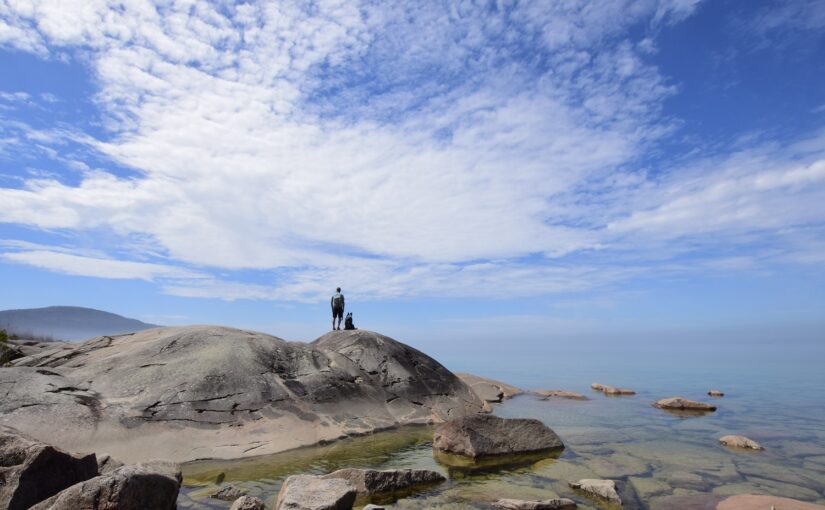Today’s blog post comes from past ecologist Corina Brdar. When Corina’s not working at Ontario Parks, she is actively involved in the growing nature journaling and mindfulness community.
It seems the term “mindfulness” is showing up everywhere in our lives these days. It can be a tricky concept to try out in your everyday life, though. An easy place to give it a try is in nature.
At the very least, some mindful time in nature can allow your busy brain a moment of rest and your nervous system an opportunity to hit pause. It can also bring a new richness to your outdoor experiences.
So what is mindfulness, and how do you “do” it in nature?
Mindfulness is about making a deliberate choice to pay attention, with curiosity rather than judgement.
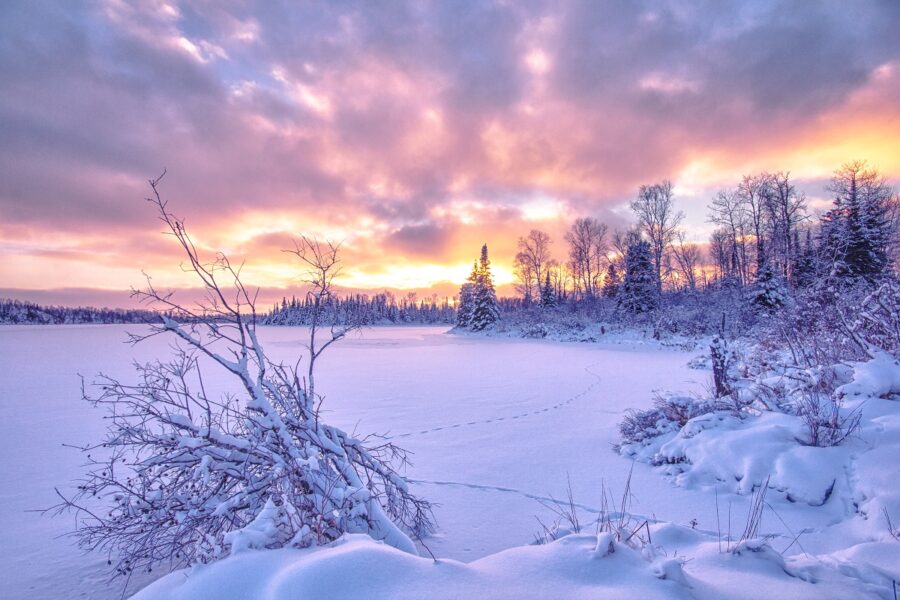
The next time you are in one of our parks or other natural spaces, or even looking out your window at falling snow, bare tree branches, or a bird feeder, give yourself 10 minutes to be still.
Find a place where you can feel at ease and not be disturbed for this short time.
What do you see?
Look more closely at the colours, shapes, and patterns.
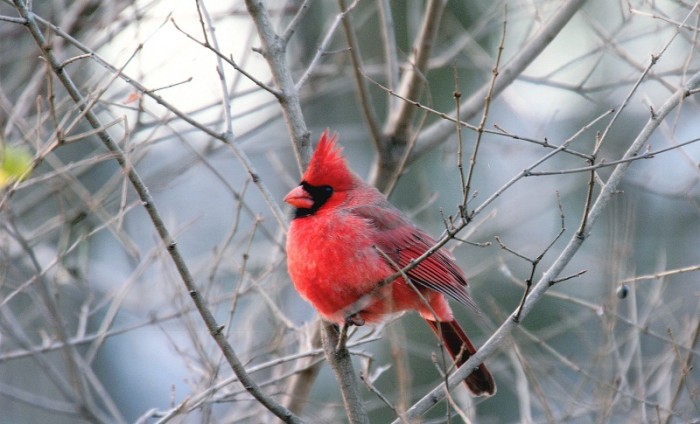
Is the light hitting the branches casting shadows or creating highlights? Is a cardinal a uniform shade of red, or does it have hints of grey, coral, or burgundy? Are the clouds in the sky changing as you watch? Can you follow the track of a snowflake as it lands?
The longer you look, the more you will see.
Curiosity over judgement
Now that you’re looking closely, you can notice how you react to what you see. This is the “without judgment” part of mindfulness.
Maybe the clouds in the sky trigger an emotion in you, or a worry that you need to get back to your car and drive home before it snows. Unless a storm is imminent, there’s nothing you actually have to do right now.
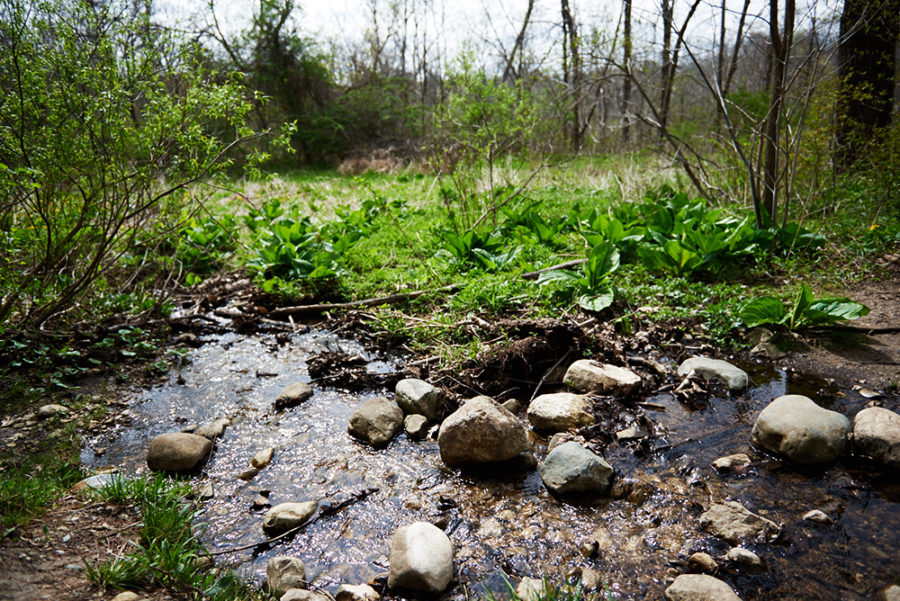
See if you can just let your thoughts and feelings about what you’re seeing come and go without you getting caught up in them.
Nobody said this would be easy! That’s okay — nobody’s marking your performance here.
Curiosity, not judgment.
What do you hear?
If you feel safe and comfortable where you are, try closing your eyes. Listen to the sounds that are around you.
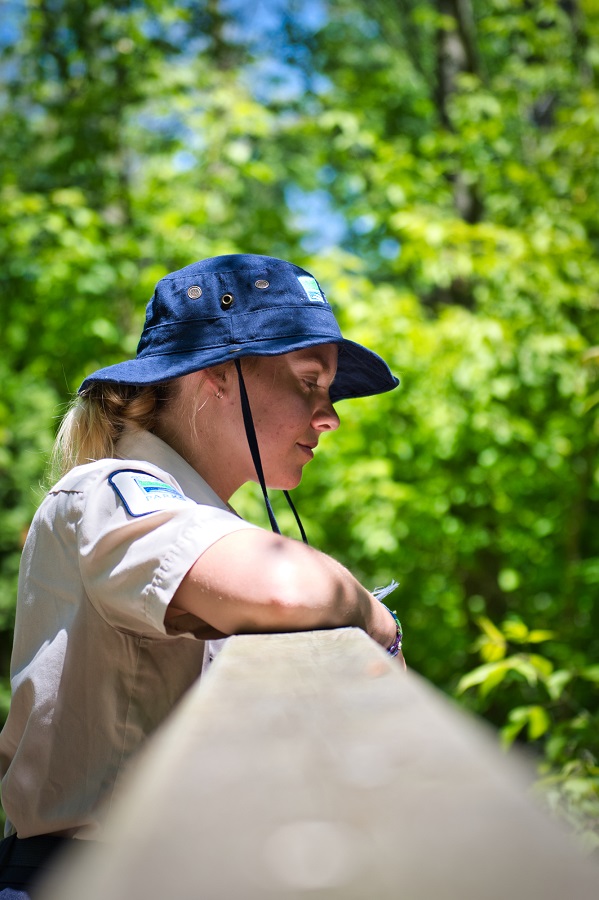
At this time of year in our parks, you may hear the soft “fee-bee” of chickadees, the echo of voices of people hiking further up the trail, the crashing of waves against the rocks, or the quiet tinkling of water as snow melts.
It’s interesting how many different sounds your ear can detect when you begin to pay attention. Resist that immediate need to identify the sounds, if you can. It really doesn’t matter what’s making the sound.
What matters in this moment is the nature of the sound itself — its pattern, its pitch, its volume. Think of the sounds as waves of energy touching your eardrums, instead of pieces of information to interpret.
What do you feel?
What about the feelings in your body? Can you feel the soles of your feet pressing into your boots or the snugness of your toque on your head?
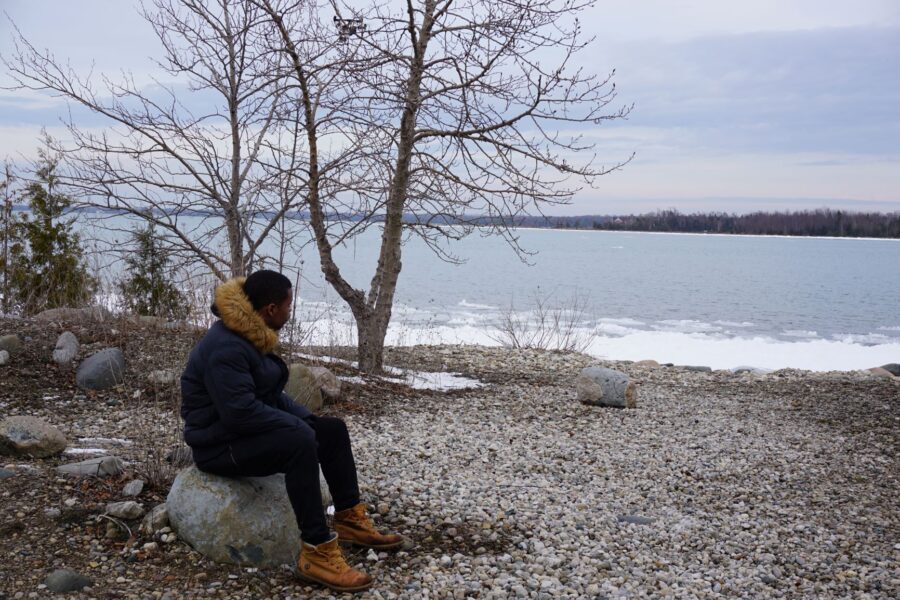
Once you start paying attention to these feelings, you’ll probably have the urge to move or shift or scratch. See if you can let those feelings come and go. If you can’t, that’s okay too, but it’s an interesting experiment to try.
Just notice
The beauty of mindfulness is there’s nothing you need to do with all of these observations. The point is to be there and notice them — that’s it.
To fully show up for these brief 10 minutes of your life.
You don’t have to post on social media about it, and you definitely don’t have to evaluate how well you did.
It’s a private little gift just for you.
If you’ve already tried meditation or another mindfulness practice, have you ever taken it outside? You may be surprised by how different it feels!
